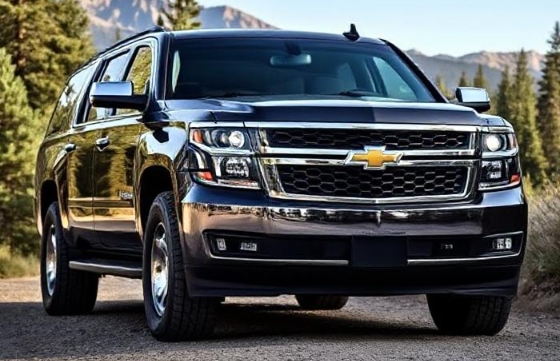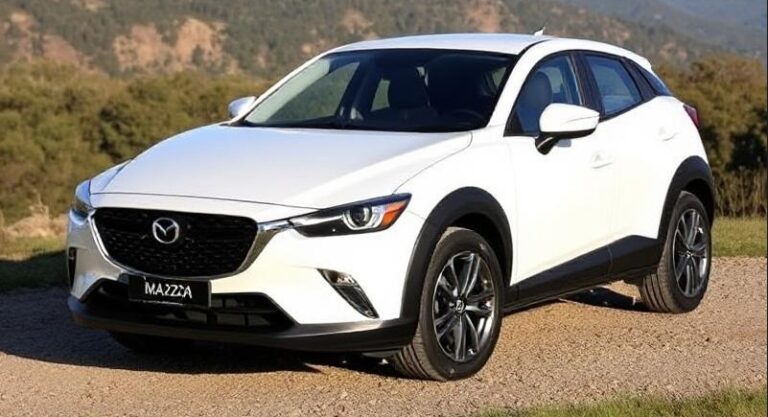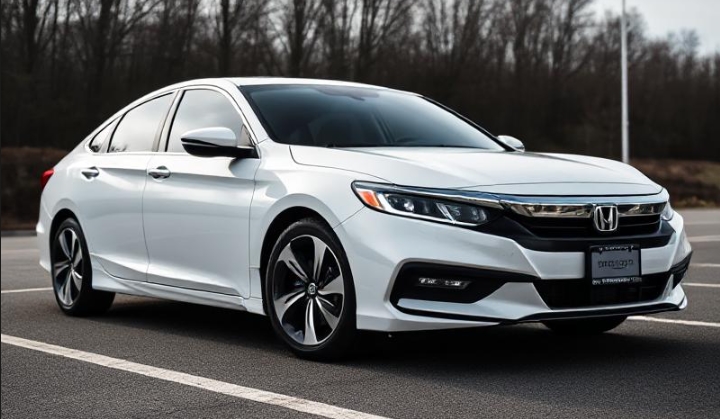From Barracks to Boulevard: The Enduring Evolution of the Mercedes-Benz G-Class
In the ever-shifting landscape of the automotive world, where models are redesigned every few years and entire nameplates vanish overnight, one vehicle stands as a monument to defiant permanence. The Mercedes-Benz G-Class, or G-Wagen as it is affectionately known—short for Geländewagen, or “terrain vehicle”—is an icon forged from military-grade steel and refined over four decades into a symbol of ultimate luxury and capability. Its journey from a spartan military implement to a six-figure status symbol parked on Rodeo Drive is one of the most remarkable stories in automotive history. This is the evolution of an unbreakable legend.
The Genesis: A Military Mandate (1972-1979)
The G-Wagen’s story begins not in a Stuttgart design studio, but with a suggestion from a powerful customer. In the early 1970s, the Shah of Iran, a significant shareholder in Daimler-Benz, proposed the idea of a supremely capable, durable, and reliable 4×4 vehicle for his military. Mercedes-Benz, recognizing the potential for both military contracts and a civilian market, entered into a cooperative agreement in 1972 with the Austrian firm Steyr-Daimler-Puch, renowned for its off-road expertise and manufacturing prowess.
The design brief was simple in concept yet immensely challenging in execution: create a vehicle with unparalleled off-road performance, maximum safety, and robust simplicity. The result, after years of grueling development in environments ranging from the Arctic Circle to the Sahara Desert, was a hand-built, body-on-frame utility vehicle that would become legendary. Production officially began in 1979 in Graz, Austria, a facility where the G-Class is still hand-assembled to this day.
The First Generation: The W460 (1979-1992) – The Pure Utilitarian
When the civilian G-Wagen debuted in 1979, it was a world away from the leather-lined cruisers of today. The W460 was a tool, designed for function over form. The interior was spartan, with vinyl seats, rubber floor mats, and a dashboard that prioritized clear instrumentation over creature comforts. It was built to be hosed out after a day in the mud.
Its true beauty lay in its engineering. The W460 featured a selectable four-wheel-drive system and, most crucially, optional front and rear locking differentials (which later became standard). This trio of lockers, controlled by switches on the dash, gave the G-Wagen its mountain-goat-like ability to claw its way over obstacles by ensuring power was sent to the wheels with traction, even if others were spinning in the air.
The W460 was offered in several configurations:
Body Styles: Short-wheelbase (SWB) Station Wagon, Long-wheelbase (LWB) Station Wagon, a two-door SWB Convertible, and various commercial panel van and chassis-cab versions.
Initial Engine Lineup:
230 G: A 2.3-liter four-cylinder gasoline engine.
280 GE: The range-topper, with a robust 2.8-liter inline-six gasoline engine.
240 GD: A 2.4-liter four-cylinder diesel, focused on torque and economy.
300 GD: The legendary 3.0-liter five-cylinder diesel, prized for its indestructible nature.
Over its lifespan, the W460 received minor updates, including optional air conditioning and automatic transmissions, but it remained fundamentally a rugged, no-nonsense off-roader, adopted by militaries and hardcore enthusiasts worldwide.
A Fork in the Road: The W463 and W461 (1990 onwards)
By the late 1980s, Mercedes-Benz recognized a growing market for luxurious and capable SUVs. To cater to this, they made a pivotal decision: the G-Class would split into two distinct branches in 1990.
The W463 (1990-2018): The Civilian Luxury Icon
The W463 series marked the G-Wagen’s official transformation from tool to treasure. While retaining the classic exterior design and ladder-frame chassis, everything else was re-engineered for comfort, luxury, and on-road civility.
Key Changes: The most significant mechanical change was the introduction of a permanent all-wheel-drive system, complemented by the now-standard three electronically locking differentials. Anti-lock brakes (ABS) were also added.
The Interior Revolution: The cabin was completely redesigned. Wood trim, supple leather upholstery, power windows, and a modern dashboard made it feel like a proper Mercedes-Benz sedan inside.
The W463 saw a vast expansion of models and powertrains over its incredible 28-year production run:
Early Models (1990s):
230 GE / G 230: The familiar four-cylinder petrol.
300 GE / G 300: The proven inline-six petrol.
500 GE (1993): A landmark limited edition, this was the first G-Wagen fitted with a V8 engine, setting the template for all future high-performance models.
G 320: Introduced with an inline-six, later updated to a more modern V6.
G 350 Turbodiesel / G 300 Turbodiesel: Powerful and refined diesel options.
The Rise of AMG and V8 Dominance (Late 1990s – 2000s):
G 500: Became the standard-bearer for the range, offering effortless V8 power.
G 55 AMG: Debuted as a naturally-aspirated V8, but the 2004 introduction of a supercharged version turned the G-Wagen into a fire-breathing muscle car on stilts. It became an instant icon of automotive excess.
Diesel Advancements: The lineup included the G 270 CDI (five-cylinder), the monstrous G 400 CDI (V8 turbodiesel), and later the more refined G 320 CDI / G 350 BlueTEC.
Peak Opulence and Absurdity (2010s):
G 63 AMG (2012): Replaced the G 55 with a more powerful and efficient 5.5-liter twin-turbo V8. Its signature side-exit exhausts and aggressive styling made it the definitive G-Wagen of the modern era.
G 65 AMG (2012): For those who felt a twin-turbo V8 was insufficient, Mercedes offered a 6.0-liter twin-turbo V12 G-Wagen. It was an engineering marvel and the pinnacle of glorious overkill.
Limited Editions: This era produced some of the wildest G-Wagens ever, including the portal-axled G 63 AMG 6×6, the towering G 500 4×4², and the ultra-luxurious Mercedes-Maybach G 650 Landaulet.
The W461 (1992-Present): The Unseen Workhorse
While the W463 was conquering city streets, the W461 carried the torch of the original G-Wagen. It retained the spartan interior, part-time 4WD system, and rugged focus of the W460. It was primarily sold to militaries, NGOs, and commercial customers under names like the “Worker” or “Professional.” Key models included the 250 GD and the 290 GD / G 290 Turbodiesel. Though its consumer availability has been sporadic, it continues to be produced for specialist clients, a testament to its enduring utility.
The Second Generation: The W463A (2018-Present) – The Complete Reinvention
After nearly 40 years, the G-Class finally received its first-ever ground-up redesign for the 2018 model year. The challenge for Mercedes engineers was monumental: how to fundamentally modernize the vehicle, dramatically improving its on-road dynamics, safety, and technology, without losing an ounce of its off-road prowess or iconic character.
Visually, the new G-Wagen (officially W463, but often referred to by its internal code, W463A) is cleverly deceptive. It looks nearly identical to its predecessor, but it is wider and longer, and almost no exterior panels are shared. The iconic door handles and the bank-vault “clack” of the locks were deliberately retained.
The real revolution was under the skin:
New Chassis and Suspension: While still a body-on-frame design, the chassis was significantly stiffer. The biggest change was the move from a solid front axle to a modern independent front suspension. This was a controversial choice among purists, but it drastically improved ride comfort and handling on pavement without compromising its legendary off-road geometry and capability. The solid rear axle remained.
Modern Interior: The cabin was brought fully into the 21st century, featuring the dual-screen widescreen cockpit from the S-Class and E-Class, integrating navigation, media, and vehicle controls into a seamless, high-tech interface.
Current Model Lineup:
G 550 (G 500 in other markets): Powered by a 4.0-liter twin-turbo V8, it offers a perfect blend of luxury and performance.
Mercedes-AMG G 63: The flagship model, now with an even more potent version of the 4.0-liter twin-turbo V8, is faster, more agile, and more luxurious than ever before.
G 350d / G 400d: Advanced inline-six turbodiesel engines offer immense torque and efficiency, proving popular in markets outside of North America.
.

.
An Electric Future: The Concept EQG
The G-Class’s evolution is far from over. Mercedes-Benz has confirmed that the icon will survive the transition to electric mobility. The Concept EQG showcases a future G-Wagen with four individually-controlled electric motors—one at each wheel. This setup promises even more breathtaking off-road control, including the ability to perform a “G-Turn,” or a 360-degree tank turn on the spot. It proves that even as powertrains change, the fundamental spirit of the Geländewagen—absolute capability—will endure.
From its humble, mud-plugging origins to its current status as a six-figure celebrity favorite, the Mercedes-Benz G-Class has never wavered from its core identity. It remains a hand-built, over-engineered, and unapologetically boxy fortress on wheels. It is a rolling paradox—a military vehicle in a tuxedo—and its four-decade journey is a testament to the power of a design that was, from the very beginning, simply right.








